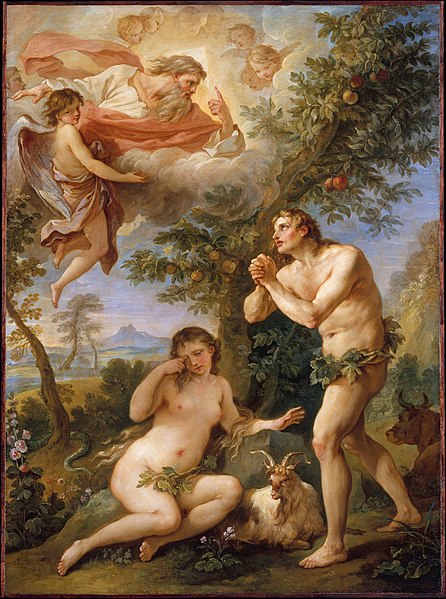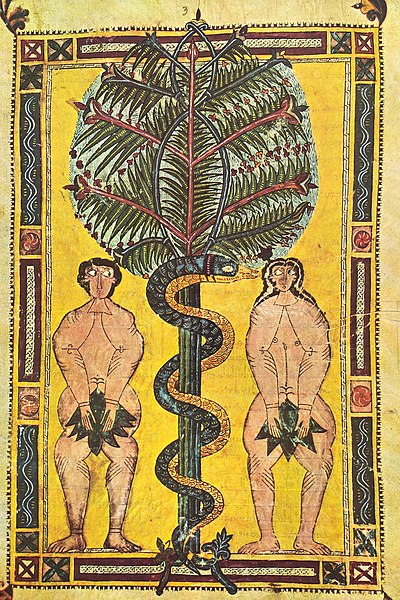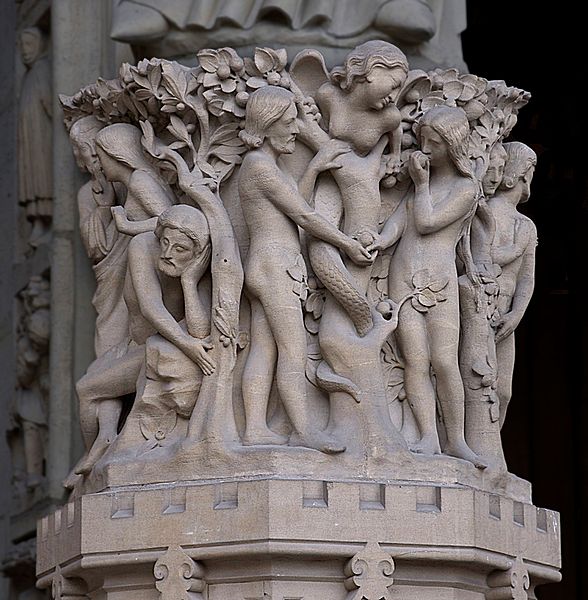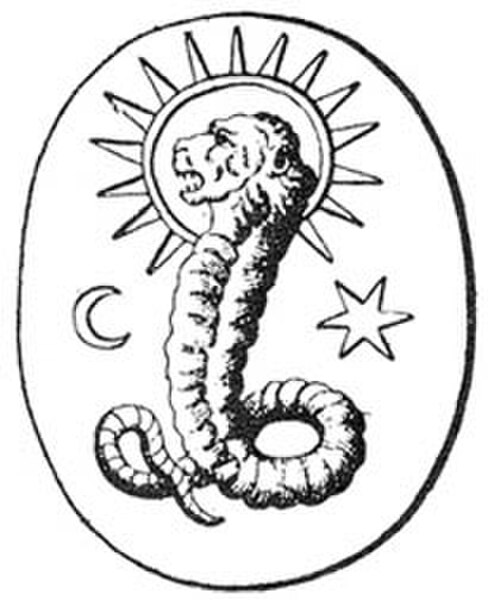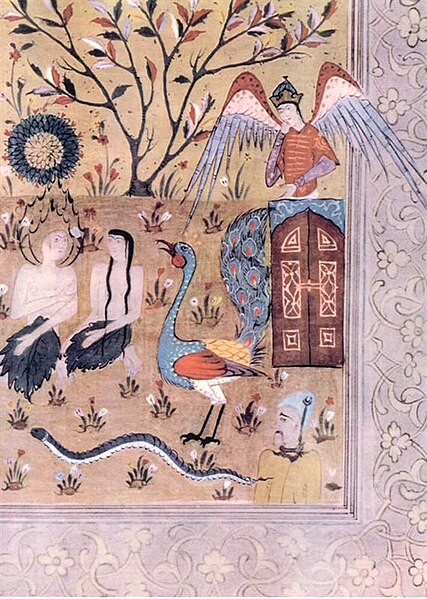Adam and Eve, according to the creation myth of the Abrahamic religions, were the first man and woman. They are central to the belief that humanity is in essence a single family, with everyone descended from a single pair of original ancestors.
They also provide the basis for the doctrines of the fall of man and original sin, which are important beliefs in Christianity, although not held in Judaism or Islam.
The Fall of Man by Peter Paul Rubens, 1628–29
The Creation of Adam depicted on the Sistine Chapel ceiling by Michelangelo, 1508–1512
The Rebuke of Adam and Eve, Natoire, 1740
Adam and Eve in an illuminated manuscript (c. 950)
The fall of man, the fall of Adam, or simply the Fall, is a term used in Christianity to describe the transition of the first man and woman from a state of innocent obedience to God to a state of guilty disobedience. The doctrine of the Fall comes from a biblical interpretation of Genesis, chapters 1–3. At first, Adam and Eve lived with God in the Garden of Eden, but the serpent tempted them into eating the fruit from the tree of knowledge of good and evil, which God had forbidden. After doing so, they became ashamed of their nakedness and God expelled them from the Garden to prevent them from eating the fruit of the tree of life and becoming immortal.
Adam, Eve, and a female serpent at the entrance to Notre Dame Cathedral in Paris, France. The portrayal of the image of the serpent as a mirror of Eve was common in earlier Christian iconography as a result of the identification of women as the ones responsible for the fall of man and source of the original sin.
The Fall and Expulsion from Paradise, fresco painted by Michelangelo in the Sistine Chapel, Vatican City (1510–1564)
A lion-faced, serpentine deity found on a Gnostic gem in Bernard de Montfaucon's L'antiquité expliquée et représentée en figures may be a depiction of the Demiurge.
Persian miniature depicting the expulsion of Adam and Eve, observed by the angel Riḍwan, the Serpent, the Peacock, and Iblīs.



